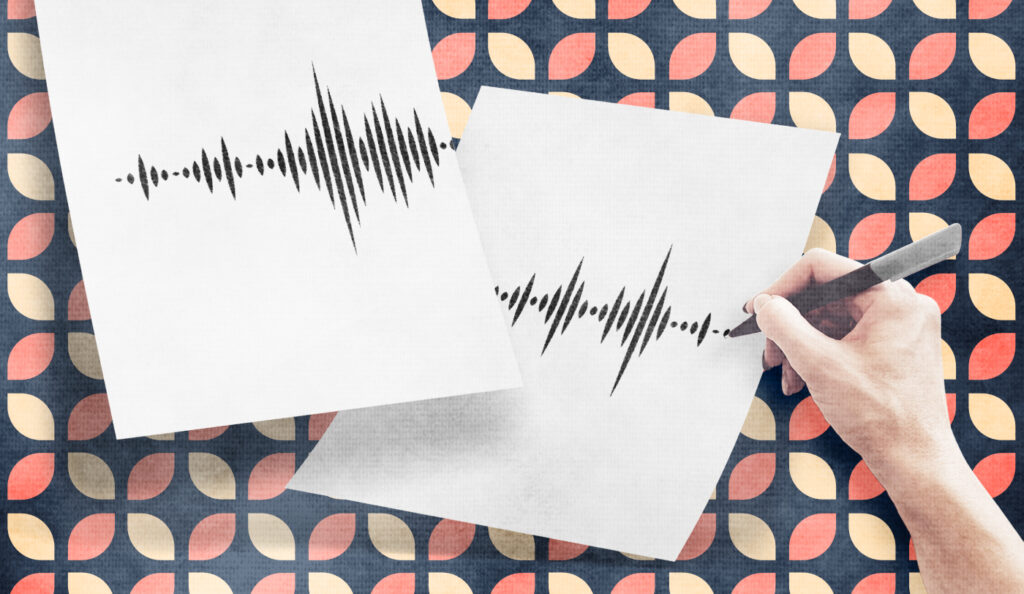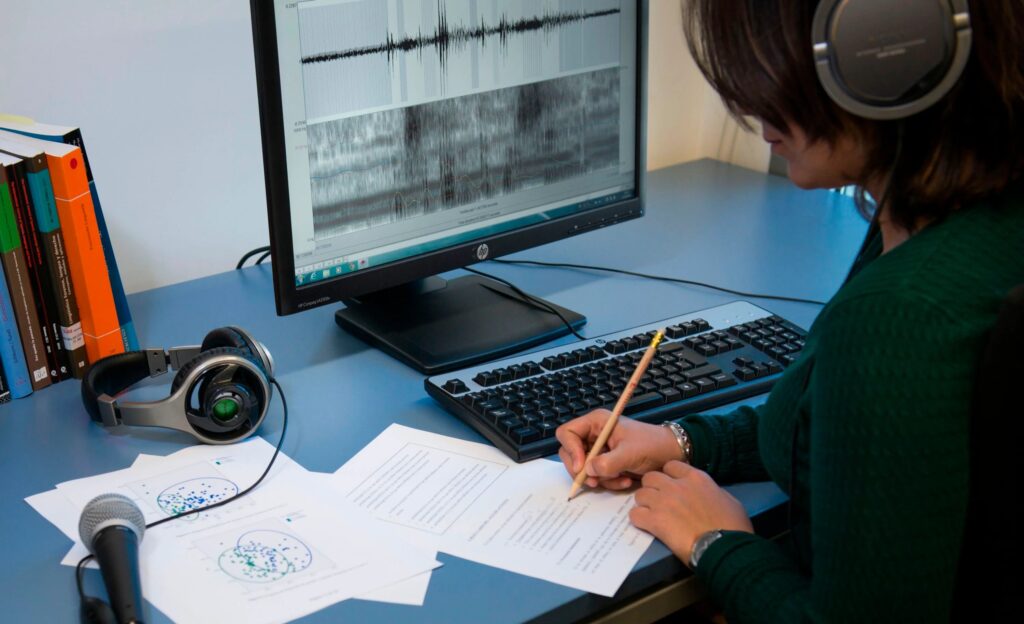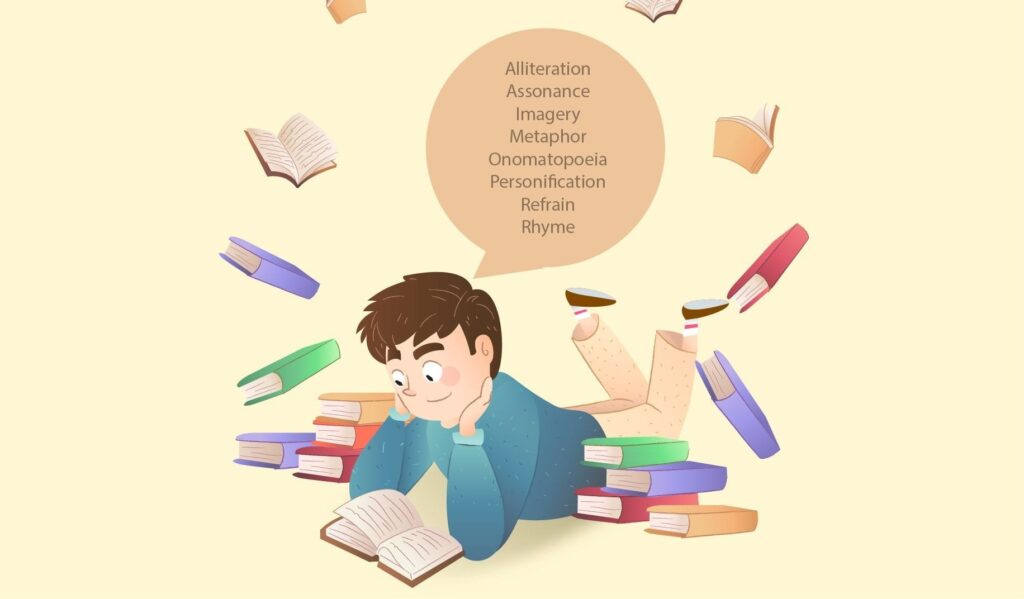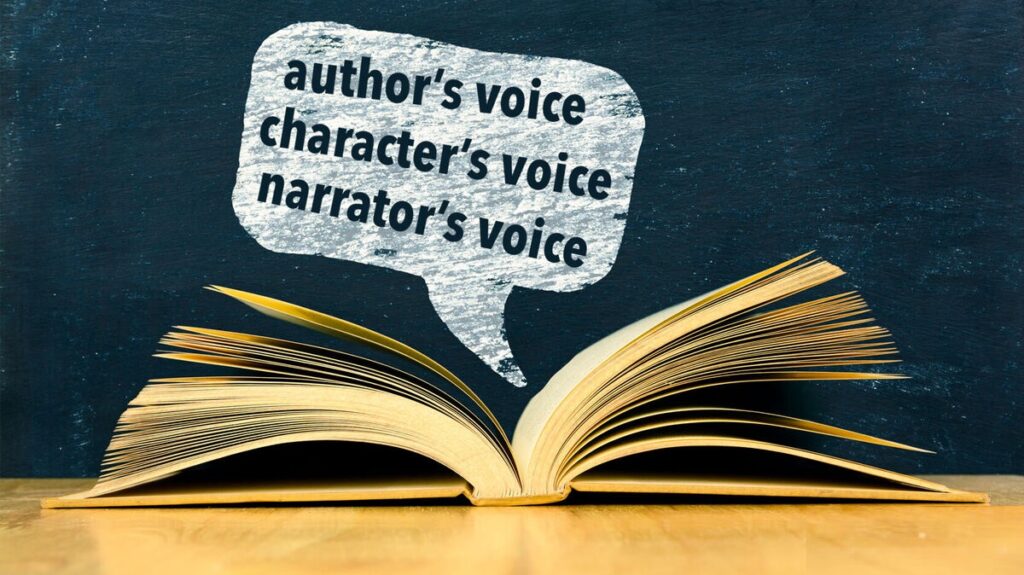In the symphony of human interaction, voices play an essential role. When a character speaks in a story, their voice is more than just words. It’s a melody of personality, history, and emotion. It hints at their past, their dreams, and their secrets.
As writers, it’s our responsibility to capture the nuances of these voices. But how do we effectively convey the subtleties of a voice in writing, especially its tone? Let’s dive in and explore the art of describing voices, focusing on the tone of voice in written narratives.

How Do You Describe Tone of Voice in Writing?
- Understanding Tone: At its core, tone of voice conveys an emotion or attitude. It’s the difference between saying, “I can’t believe you did that!” in anger, amazement, or joy. As a writer, it’s crucial to determine the emotional state or attitude of a character when they speak.
- Use Descriptive Adjectives: The quickest way to convey tone is through adjectives. Words like ‘shrill’, ‘melodious’, ‘gruff’, or ‘whispery’ immediately give the reader a sense of the voice’s quality. Think of how the voice feels in the ear – is it rough like sandpaper, or smooth like velvet?
- Rely on Context: Often, the situation or setting can help convey the tone. A dialogue set at a funeral will likely have a different tone than one at a birthday party. Moreover, a character’s past experiences, relationships, and current emotions can all inform their tone of voice.
- Use Action and Body Language: Sometimes, what a character does while speaking can highlight their tone. A character who’s pacing and wringing their hands while talking likely has a different tone than someone lounging lazily in a hammock.
- Dialogue Tags Are Your Friends: Instead of the plain ‘said’, try tags like ‘whispered’, ‘shouted’, ‘murmured’, or ‘hissed’. But use them judiciously – overdoing it can feel forced.
- Internal Monologue and Reflection: By diving into a character’s thoughts, you can often clarify the tone. For example: She said, “It’s lovely.” But in her mind, it was anything but lovely.
Feedback from Other Characters: How other characters react to what someone says can provide additional insight. If one character makes a statement and another wince, the reader gets a cue about the tone.
Practice Listening: As a writer, becoming an active listener in real life can help. Pay attention to people’s tones in different situations. How do they vary? What emotions do they convey? This real-world insight can enrich your writing immensely.
Capturing the tone of voice in writing is both an art and a science. While the above tips provide a framework, the real magic happens when you combine them with your unique voice and observations. With practice and keen attention, you can master the art of conveying the melodies and nuances of spoken words on paper.
How to Describe Voice in Writing Using Adjectives and Similes

When we read a well-written narrative, the voices of the characters should be almost audible in our minds. This auditory illusion is crafted skillfully using language. Two potent tools in a writer’s arsenal for this task are adjectives and similes. Here’s how you can use them to describe voices in writing:
Using Adjectives
Texture and Quality:
- Raspy: A voice that has a rough, grating quality.
- Silken: A smooth and soft voice, often pleasant to hear.
- Melodious: A voice that has a musical or tuneful quality.
- Husky: A slightly rough sound, often considered attractive or intimate.
- Nasal: A voice that resonates through the nose.
Volume and Pitch:
- Shrill: A voice that is high-pitched, sometimes unpleasantly so.
- Sonorous: A voice that is deep, loud, and resonant.
- Sibilant: Hissing sounds, especially on the “s” sound.
- Whispery: Soft and hushed, like someone is whispering.
Emotion and Intent:
- Cheerful: A voice that sounds happy and light.
- Sombre: Serious, grave, and filled with gravity.
- Wistful: Full of longing or unfulfilled desire.
- Sardonic: Disdainfully or skeptically humorous.
Using Simile
Similes compare two unlike things using ‘like’ or ‘as’, making the description vivid and relatable.
Texture and Quality:
- Her voice was raspy, like leaves scraping against each other.
- His voice was as smooth as aged whiskey.
Volume and Pitch:
- Her shrill voice pierced the air like a siren.
- His words boomed, as deep and resonant as a church bell.
Emotion and Intent:
- Her voice held a cheerfulness like sunlit meadows in spring.
- His voice was sombre as if echoing through a long, empty corridor.
Tips for Effective Description:
- Less is More: Don’t overdo it. One well-placed adjective or simile can be more effective than a flurry of descriptors.
- Avoid Clichés: While it’s okay to use familiar similes, strive for unique comparisons that will surprise and delight your reader.
- Ensure Context Matches: Ensure the situation or emotion in your story matches the description. A ‘silken’ voice might not fit in a stressful confrontation, just as a ‘raspy’ voice might feel out of place in a romantic serenade.
- Mix and Match: Don’t stick to only adjectives or only similes. Combining them can give depth and layers to your voice descriptions.
Expert Tip: Describing a voice effectively can transport your reader into the heart of the scene, making characters and their interactions come alive. With the strategic use of adjectives and similes, your narratives can sing with the authentic sound of genuine voices.
Analyzing a Voice in Literature

Voice in literature refers to the distinct style, tone, and character that’s present in an author’s writing or the unique attributes given to a narrative persona. Analyzing it is akin to recognizing the unique cadence, pitch, and timbre of a person’s spoken voice. Here’s a guide to analyzing voice in literature:
- Identify the Speaker: Is the voice that of the author? Or is it a character’s? Or perhaps an omniscient narrator;’? Understanding the source is the first step.
- Determine the Tone: Is the voice serious, humorous, sarcastic, melancholic, joyful, or introspective? Tone can offer clues about the writer’s attitude toward their subject or audience.
- Understand the Diction: Examine the choice of words. Are they formal, colloquial, archaic, jargon-filled, or poetic? This can give insight into the education, background, or mindset of the voice.
- Assess the Structure and Syntax: Are the sentences short and choppy or long and flowing? The pacing and rhythm can reveal a lot about the voice’s mood and intent.
- Examine the Perspective: Is it written in first-person, second-person, or third-person perspective? This can influence how intimate or detached the voice feels.
- Look for Recurring Themes or Motifs: These can provide insights into the core concerns, obsessions, or values of the voice.
- Consider the Overall Purpose: What is the voice trying to achieve? Inform, persuade, entertain, or perhaps confront?
Example of a Strong Voice in Writing

One of the most distinctive voices in literature belongs to Mark Twain, particularly in “The Adventures of Huckleberry Finn.” Twain’s voice, channeled through the young Huck, is colloquial, witty, and observant. Here’s an excerpt:
“You don’t know about me without you have read a book by the name of The Adventures of Tom Sawyer, but that ain’t no matter. That book was written by Mr. Mark Twain, and he told the truth, mainly. There were things which he stretched, but mainly he told the truth.”
In this short passage, you can immediately sense Huck’s candid, youthful perspective. The language is informal and direct, and there’s a humorous undertone in his admission that Twain “stretched” the truth. It showcases Huck’s voice as authentic, skeptical, and refreshingly honest.
Analyzing voice requires keen observation and an understanding of various literary elements. A strong voice, like Twain’s, remains memorable and provides the narrative with authenticity, color, and depth.
How do you describe a voice in a poem?

Describing a voice in a poem is a delicate task, weaving emotion and imagery into the fabric of the narrative. Because poems often work within a limited scope, each word carries weight. Here’s how you can describe a voice in a poem:
- Sensory Imagery: Use sensory details that evoke auditory images. Think of sounds in nature, like rustling leaves for a soft voice or booming thunder for a strong voice.
Example: “Her voice, a whispering breeze, grazed my ears.” - Emotion and Mood: Express the emotion that the voice carries or instills in the listener. This can reflect sadness, joy, anger, or any other emotion.
Example: “His voice, a mournful lullaby, sang tales of forgotten yesterdays.” - Metaphors and Similes: Compare the voice to something relatable, giving readers a vivid image or sensation.
Example: “Her voice was like molten chocolate, smooth and rich.” - Texture and Tone: Use adjectives that express the texture (rough, smooth, raspy) or the tone (warm, cold, distant) of the voice.
Example: “The gritty gravel of his voice echoed pain from years past.”
- Rhythm and Musicality: Consider the rhythm or musical quality of the voice. Is it staccato, melodic, monotone, or rhythmic?
Example: “In rhythmic cadence, her voice danced, a melody of hope in the dark.”
- Volume and Pitch: Describe whether the voice is loud, soft, shrill, deep, etc.
Example: “In hushed tones, lower than the evening’s shadow, he confessed his dreams.” - Personification: Grant the voice human-like characteristics or behaviors to enhance its essence.
Example: “The voice, weary and aged, tiptoed through the corridors of memory.” - Physical Reaction: Describe the impact of the voice on the listener or the environment.
Example: “With every word, her voice painted the room in shades of golden joy.”
Expert Tip: Incorporate these techniques based on the mood and theme of your poem. The ultimate goal is to evoke a strong auditory image in the reader’s mind, allowing them to “hear” the voice as they navigate the verses of your poem.
Literary Description of a Voice

In literature, the voice can refer to two main concepts:
- Authorial Voice: This is the distinct style or manner in which an author expresses themselves in writing. It’s a combination of the author’s tone, mood, diction, syntax, and overall writing style. It’s what makes one writer’s work distinguishable from another’s.
- Narrative Voice: This pertains to the persona, tone, and style used by a writer to convey a story. It’s the perspective from which the events are told, which might be a character within the story (first-person) or an external, omniscient narrator, among other possibilities.
Descriptors of Vocal Quality

When describing the actual sound of a voice in literary works, writers use various descriptors to convey vocal quality. Here are some of the most common ones:
Texture/Timbre:
● Raspy: Rough or scratchy, like sandpaper.
● Smooth: Without any noticeable bumps or interruptions; pleasing to hear.
● Husky: Deep and slightly rough, often in an attractive way.
● Crisp: Clear and concise, easy to understand.
Volume:
● Hushed: Soft and quiet.
● Booming: Very loud and resonating.
● Piercing: High-pitched and sharp, almost painful to hear.
● Muted: Softened or subdued.
Pitch:
● High-pitched: More towards the treble end of the scale.
● Low-pitched: More towards the bass end of the scale.
● Shrill: Unpleasantly high and sharp.
● Sonorous: Deep, resonant, and often impressive.
Emotional Quality:
● Cheerful: Reflecting happiness or positivity.
● Melancholic: Sad or sorrowful.
● Animated: Lively and spirited.
● Monotonous: Lacking in variety, flat, without inflection.
Clarity:
● Clear: Easily understood, distinct.
● Muffled: Difficult to hear clearly.
● Slurred: Words run together, often due to intoxication or tiredness.
● Articulate: Spoken clearly with distinct syllables.
Rhythm and Pace:
● Staccato: Short and detached; abrupt.
● Legato: Smooth and connected; flowing.
● Rapid: Fast-paced.
● Languid: Slow and relaxed.
Resonance:
- Nasal: Resonating in the nose.
- Throaty: Deep and resonant, coming from the throat.
- Breathy: With a lot of audible breath.
- Resonant: Having a deep, full, reverberating sound.
Using these descriptors can help paint a vivid auditory image for the reader, adding depth to characters and enhancing the overall atmosphere of a scene.
How does the narrative voice influence the reader’s perception of a story?
The narrative voice is akin to a guide that walks a reader through the landscape of a story. It has the power to shape a reader’s understanding and engagement with the narrative.
A strong, relatable voice can make readers feel emotionally connected as if they’re experiencing events firsthand, while a detached or unfamiliar voice might provide an objective or even alien perspective.
For instance, an intimate first-person narrative voice can immerse readers into the character’s personal experiences, feelings, and inner conflicts, fostering a deeper emotional bond.
On the other hand, an omniscient third-person voice can offer a broader perspective, allowing the reader to understand the larger scope of events and the interplay of multiple characters’ motivations and actions.
The authorial voice is a writer’s unique fingerprint in the realm of literature. Just as no two people speak or express themselves in the exact same manner, no two writers have the same authorial voice. This voice comprises their choice of words (diction), sentence structures, rhythms, tones, and themes they often gravitate toward.
For instance, Ernest Hemingway’s minimalist, straightforward prose is easily distinguishable from the ornate, intricate sentences of F. Scott Fitzgerald. Readers often find themselves drawn to certain authors because of this unique voice, associating it with specific emotional experiences, insights, or narrative styles they enjoy.
Developing an authorial voice is a journey of self-discovery, continuous learning, and immense practice. It begins with extensive reading. By exposing oneself to a plethora of styles, genres, and voices, a writer can discern what resonates with them. Writing regularly, experimenting with different styles, and seeking feedback are also crucial.
Over time, patterns will emerge, reflecting the writer’s preferences, beliefs, and idiosyncrasies. Personal experiences, values, and cultural background also play a role in shaping this voice. It’s essential to understand that this voice isn’t static; it evolves as the writer grows, both in skill and as an individual.
In what ways can a mismatched tone or voice detract from the narrative?
A mismatched tone of voice can create a jarring experience for the reader. Imagine a dark, tragic event described with a cheerful or humorous voice it would seem out of place and could diminish the gravity of the situation. Similarly, using a casual, colloquial voice in a historical epic might feel anachronistic and disrupt the immersion.
Quick Fact: When the voice or tone doesn’t align with the content or the setting, readers might struggle to connect emotionally or intellectually with the story, leading to a sense of detachment or even confusion.
How does the use of diction influence the perception of vocal clarity in literature?
Diction, or word choice, is pivotal in conveying vocal clarity. Using precise, evocative words can paint a vivid picture of a voice’s sound and emotion. For instance, describing a voice as “whispered” rather than just “soft” gives a clearer auditory image.
Similarly, words like “articulate” or “slurred” not only describe the sound but also give insights into the speaker’s state of mind or physical condition. A well-chosen word can provide layers of meaning, allowing the reader to hear the voice in their mind and understand the nuances behind its modulation.
Variety in vocal descriptors aids in character differentiation and development. Each character is a unique entity with its own background, experiences, and emotions. By giving each character a distinctive voice, authors add depth to their personalities, making them more relatable and real to the readers.
For example, a wise old character might have a “sonorous, slow-paced” voice, reflecting age and gravitas, while an energetic young character might have a “crisp, rapid” voice, reflecting youth and vivacity.
These variations not only enhance the auditory landscape of the narrative but also provide subtle cues about characters’ personalities, histories, and current emotional states.
How do rhythm and pace in vocal descriptors mirror or contrast a scene’s atmosphere?
Rhythm and pace in vocal descriptors can be used strategically to amplify or counterpoint a scene’s mood. In an intense, fast-paced scene, a character’s “staccato” voice might echo the urgency of the situation. Conversely, in a calm, reflective scene, a “languid” voice could emphasize the relaxed nature of the moment.
However, authors can also use contrast to striking effect. For instance, amidst the chaos, a character speaking with a “smooth, rhythmic” voice might stand out, highlighting their control or detachment from the surrounding turmoil. Through such alignment or juxtaposition, the voice becomes an instrumental tool in setting or subverting the atmosphere of a scene.
What is the potential impact of using sensory imagery in depicting a voice in literature?
Utilizing sensory imagery when depicting a voice is akin to painting a vibrant scene with words. By allowing readers to “hear” the voice in their minds, the narrative becomes richer and more immersive. Descriptions such as “a voice as cold as a winter breeze” or “a laugh reminiscent of tinkling glass” evoke specific auditory and sensory reactions.
As humans, we’re innately wired to respond to sensory stimuli; therefore, the use of such imagery makes characters and situations more relatable, grounding fantastical or unfamiliar narratives in sensory experiences readers can understand and empathize with.
How can emotion and mood in a voice guide the reader’s feelings about a particular scene or character?
Voices, as described in literature, often act as windows into characters’ souls. A “melancholic lilt” or a “cheerful hum” not only informs about the current state of the character but also nudges readers towards feeling a certain way. When we read about a voice “quivering with suppressed rage,” we can sense the tension, perhaps evoking fear or anticipation.
Conversely, a voice described as “warm as a comforting hug” can evoke feelings of safety and affection. In essence, by depicting the emotion and mood in a character’s voice, authors guide readers’ emotions, ensuring they’re aligned with the intended atmosphere of the scene.
Why is the use of metaphors and similes especially potent in describing voices?
Metaphors and similes draw parallels between the unfamiliar and the familiar. By comparing a voice to something relatable, like “molten chocolate” or “a rushing stream,” the reader can instantly grasp its quality, even if they’ve never “heard” that particular voice.
This association bridges the gap between the textual description and the reader’s imagination, providing them with a tangible anchor. Furthermore, such comparisons often carry additional connotations; “molten chocolate” doesn’t just suggest smoothness, but also warmth, richness, and maybe even a hint of indulgence or sensuality.
How do descriptors of rhythm and pace influence the perceived personality or mindset of a character?
Rhythm and pace in vocal descriptions can reveal much about a character’s state of mind or even their personality. A character with a “rapid, staccato voice” might be perceived as anxious, impatient, or excited. In contrast, one with a “languid, flowing voice” might come across as relaxed, confident, or contemplative.
Over time, these vocal rhythms can be associated with consistent character traits, allowing readers to make quick judgments or anticipate reactions. For instance, a methodical character might always speak at a measured pace, and any deviation from this could signify a significant emotional upheaval for them.
How can personification add depth to the description of a voice?
Personifying a voice giving it human-like characteristics or behaviors can add layers of meaning to a narrative. Describing a voice as “tired” or “elusive” personifies it, suggesting not just sound quality but also emotion or intent. A voice that “tiptoes” might imply secrecy or caution; one that “roars” suggests not just loudness but also power and possibly anger.
By personifying a voice, authors grant it agency, turning it into an active participant in the narrative rather than just a passive descriptor.
What is the relationship between vocal clarity descriptors and character backstory or development?
Descriptors of vocal clarity, such as “muffled,” “articulate,” or “slurred,” can offer subtle hints about a character’s history or current state. A character who consistently speaks in muffled tones might have a history of repression or a reason to hide their feelings. On the other hand, an articulate voice might indicate education or a background that values clear communication.
Similarly, a sudden slurred speech could hint at intoxication, illness, or fatigue. By paying attention to these vocal nuances, astute readers can glean insights into characters’ backgrounds, motivations, or upcoming arcs.
How does resonance play a role in setting the atmosphere of a scene or reflecting character dynamics?
Resonance in vocal description isn’t just about the sound; it’s also about the impact. A voice with a deep resonance might fill a room, demanding attention and possibly indicating authority or gravitas.
A nasal resonance could be comedic, annoying, or indicative of a cold. Furthermore, the interplay of resonances between characters can reflect dynamics a scene where one voice drowns out another in resonance could signify dominance or suppression.
Resonance, in essence, adds another layer of auditory texture, helping set the scene’s tone and highlighting inter-character relationships.
Conclusion
The art of describing voice in literature is intricate, requiring a balance of precision and creativity. Beyond mere auditory representation, it serves as a portal into characters’ souls, reflecting their emotions, histories, and relationships.
As readers, we often underestimate the power of these vocal descriptions, but they’re instrumental in shaping our engagement with the narrative. A well-described voice doesn’t just echo in our ears but resonates in our hearts, making stories come alive in our minds.
